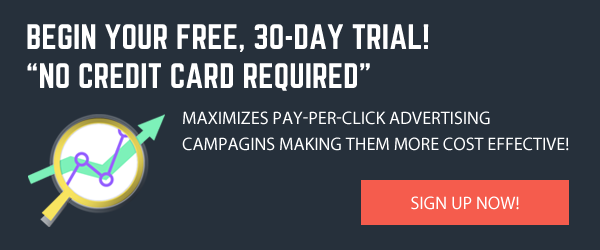What exactly is ad retargeting?
Ever noticed that after visiting a website that offers a service of some kind, you see their ads everywhere you go? You may see their posts on Facebook, or ads on other websites that you visit, or even in your Google searches. This isn’t a coincidence, of course. These websites are taking advantage of a fairly recently introduced ad mechanism called ‘retargeting’ (aka / ‘remarketing’).
So what is ‘ad retargeting’? Simply put, you can tag people who visit your website (usually using cookies) and, using ad services like Google Adwords or AdRoll, show these people ads in almost every site they visit, or at least, the sites that sell advertising space.
When you start using a retargeting service – and I’ll use Google AdWords here as an example, simply because the service is free, and you can start using it straight away– you will get a snippet of code that you can add to your website’s HTML code (if you don’t know how, you can email the information to your webmaster). The code basically tells your website to start tracking the visitors using cookies (remember them?), and add them to a ‘retargeting’ list. The cookies usually last 90 days, so if someone hasn’t visited your site in four months, he won’t see your ads anymore.
Retargeting tools have some more advanced options, of course. For example, you’ll notice that you can create more than one remarketing list. You can create a list with visitors who came to your website and only visited your home page, visitors who signed up for the service, or visitors who navigated over to the pricing page, and so on. You can even create a list that has visitors who saw your FAQ page, but didn’t visit the pricing page. This is an extremely important feature, on which I’ll elaborate more, later in the post.
Start creating your own landing pages with Pagewiz
Ad retargeting is the 8th point of contact (and 9th, and 10th)
One of the most common mantras of sales people is that it takes several points of contact to convert a lead into a sale. The magic number used to be 7 points, but that number seems to be on the rise, due to people being inundated by information and content from social networks.
An example of points of contact are:
- Your business card
- A phone call to the lead
- A meeting at the office
- Browsing to your website
Ad retargeting is an additional point of contact that you can have with potential leads after they visit your website, even if they don’t leave any of their contact details behind. You can reach out to them again and again, reminding them why they were interested in your service in the first place, and giving them a place to reach out and contact you, or sign up for your service.
The more you see a brand, the more you trust it
Another significant advantage of advertising to people who left your website is all about branding, and trust. Several studies have shown that people are more inclined to provide websites with their personal information – such as their name and email – if they trust the brand that is behind the website. One of the ways you have of generating that trust is through familiarity. The more people see a brand – yours, in this case, the more familiar they are with it, and the chances of those people trusting you with their details and signing up for your services is greater.
Keep in mind that people who visit your website are, in all likelihood, potential users and clients, who have already expressed some sort of interest in your service. After all, they reached your website, didn’t they? They may have clicked an ad in Facebook or Google, heard about your site from a friend, or looked for a similar service on Google.
When you use a retargeting tool, you are essentially building up a virtual ‘mailing list’, so to speak, of people who stopped by your store and stuck their head in, but didn’t actually purchase anything.
Ad retargeting helps you tell your potential customers a story
To sum up so far, ad retargeting is a list of your site visitors that you can reach out to via ads.
So far, so good.
Now comes the fun bit – creating a path for the website visitors who didn’t complete the conversion path the first time around.
Conversion – completing the action that you want them to take. It could be something as simple as signing up for a newsletter, or more concrete, like completing a sign up form, or clicking a download button.
Remember we said that you can sort your website visitors into lists by adding code to different pages in your website? You can have a different list for people who visited your pricing page, a different list for people who visited your ‘FAQ’ page, and a different one for people who never left your home page.
Let’s think about that for a second. People came to your website because they were interested in what you have to offer. So why didn’t they sign up? Perhaps they were called away before they had time to dig into your site some more. Maybe the pricing plan wasn’t attractive enough. Possibly you didn’t market your killer feature in the right way, or you didn’t market the killer feature that your potential clients wanted to see (even though you have it). Or it could be as simple as the fact that it takes time to arrive at a decision when it comes to your service (buying a car isn’t a spur of the moment thing).
So we know where they left your website, and we can guess what sort of reason made them leave. That gives you an amazing opportunity to craft the exact message that helps your website visitors convert into users, and potentially, customers. This message will be presented in the form of ads, which in turn leads to highly specialized landing pages, and from there to the action that you want the visitor to take.
When we think of ads and messages that we want to deliver potential customers who left our website, it sometimes helps to build personas – Characters that we build to represent those people. That way, we know where to target them, and what they want to hear.
For example:
People who saw our homepage, and left:
John clicked an ad in Google Search, and reached our website. He stayed on the homepage for about 2 minutes, then left.
In this case, John was interested in what we have to say (because he stayed on the homepage for two minutes), but we didn’t manage to convince him to take the next step. We should retarget these people with an ad that highlights a super-awesome feature.
People who viewed our feature page, and left:
Jack browsed the website and ended up on the feature page (without going through the pricing plans). He stayed there for a few seconds, and left.
In this case, Jack was certainly interested in our features, but apparently he didn’t see what he wanted to see there. We should retarget him with an ad that promotes a specific feature that isn’t prominently displayed on the page.
Remember the steps that people take when they visit your website. Now think that you can target a specific set of people – for example, those who made their way through the site, reached the pricing page, and left – with a very specific message. Say, ‘Holiday Sale’, because these people thought the price was too high. This message begins with the ads that they see scattered around websites that they trust (which in turn, engenders trust in the ads that appear there). This message reaches the people at just the time that they are considering making a final decision – the tilting point. It continues with a specific landing page which reflects the same message in both marketing content and design, and leads them straight to the decision they are now in the position to make, which is to make a purchase.
So what is ad retargeting again?
A message that targets the very specific need these people have regarding your service, and is echoed in ads, landing pages, and action. It is incredibly powerful, and is a VERY effective way of turning your website visitors into leads.
Avi Kaye is a social media marketing consultant for software startups. In addition to PageWiz, he also writes for himself on his own blog, in between numerous cups of coffee.






